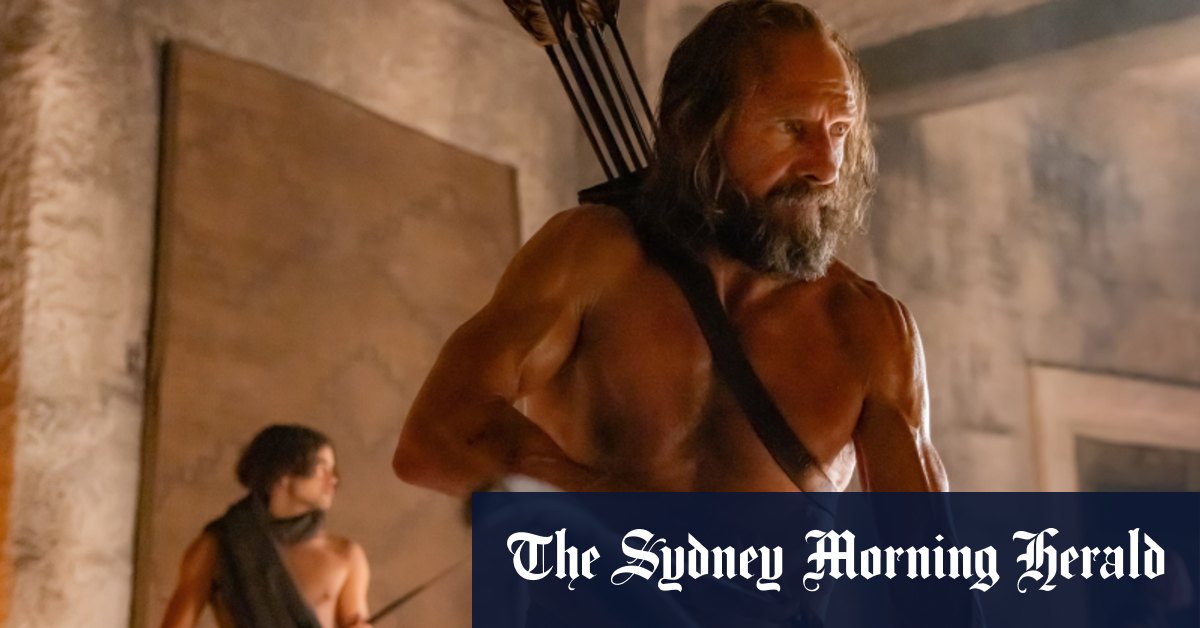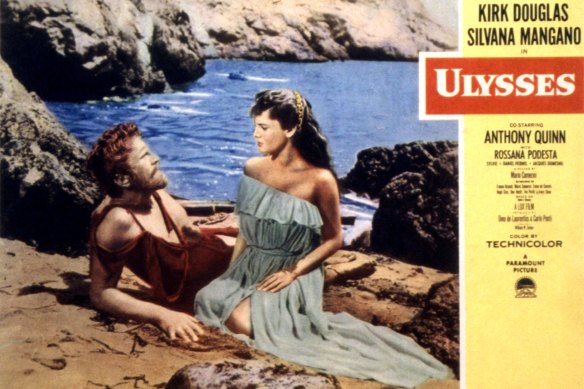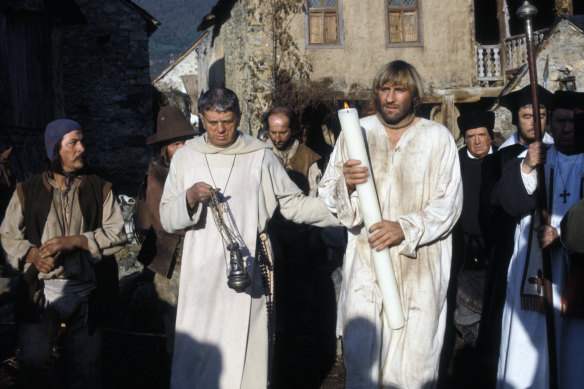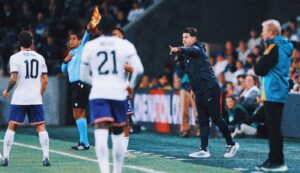
The year was 1996 and my friend, Uberto Pasolini, an independent producer, was standing on a street in London’s Soho giving away tickets to a preview screening of his latest film. I had come along to support him as he had been sounding typically downbeat about the film’s prospects. It was a low-budget affair, he told me, shot in the industrial north of England, written by Simon Beaufoy, directed by Peter Cattaneo and starring a cast of relative unknowns.
So I sat down to watch with few expectations, but the film made me laugh and cry and raised a cheer from the packed cinema. It was called The Full Monty, went on to gross more than $250 million from its tiny budget and was nominated for four Oscars including the best film, best director and best original screenplay.
Uberto and I had first met, two years earlier, to discuss his passion project The Odyssey. My first response at the time was to point out that The Odyssey is famously un-adaptable. The Kirk Douglas version Ulysses (1954) tried to cram all the highlights into a single movie – the Cyclops, the Sirens, the love affair with Circe and so on – a spirited if dated effort which kind of proved my point that the epic Homeric poem – 24 books in all – was far too complex for a single film. That, in fact, is the central joke of Jean-Luc Godard’s Contempt (1963) which is ostensibly about a failed attempt to wrangle The Odyssey into a workable screenplay, but actually centres on the age-old tension between art and commerce in making a Hollywood epic.
Uberto’s instincts leaned towards the artistic and away from the blatantly commercial. The references he cited were David Webb Peoples’ Oscar-winning Unforgiven (1992) and Daniel Vigne’s The Return of Martin Guerre (1982). In other words, he suggested, I should think of our film as a simple homecoming movie in which a warrior returns home, filled with self-hatred after many years of fighting an unjust war. What he finds on his return is that his son Telemachus has grown up deeply resenting him, and his wife Penelope is besieged in her palace, surrounded by interlopers intent on exploiting the island’s riches, abusing its populace and hoping to marry the queen.

Uberto Pasolini, Ralph Fiennes, Juliette Binoche and Claudio Santamaria at the premiere of The Return at the Rome Film Fest.Credit: Mondadori Portfolio via Getty Images
In this version I would dispense with the monsters, the endless wandering, and the constant interference of the gods – all elements one normally associates with the story. Uberto saw The Odyssey as a modern psychological drama disguised as a period piece, and his instinct proved absolutely right. When one embarks on this kind of adaptation, finding a sound psychological reason for every action, stripping away the overlay of magical thinking, one discovers the timeless human story that lies at the heart of the Homeric poem.
There is good evidence that the siege of Troy was a real event, and that the Bronze Age kings of Greece were real people. The way they lived and the wars they fought are now well documented, and not so dissimilar from tribal conflicts in Roman, medieval, or indeed modern times. Travelling in remote parts of the world – as I did as a doctor before my career as a screenwriter – feels like travelling back in time to a pre-industrial era. One need not go too far from the cities of Central Africa to find small communities, like those of Bronze Age Ithaca, whose menfolk have left the fields to wage war, whose remaining population consists largely of old folk, women and children, vulnerable to armed raiders. And one can easily find in modern America, or my adopted homeland Australia, soldiers who returned from some foreign conflict in Afghanistan or Iraq, with doubts about the purpose of the war and their part in it. Survivor guilt is not new, nor is PTSD, nor is the inner turmoil of the returning warrior. Asked to recount the glorious victory at Troy, according to Homer: “…great Odysseus melted into tears, running down from his eyes to wet his cheeks…” There is no shortage of military vets who can identify with that emotion.

The Kirk Douglas version of Ulysses (1954).Credit: LMPC via Getty Images
Equally familiar in modern times is the steadfast military wife or abandoned child, finding that the soldier/husband who comes back home is not the same person as the man who went away. It is perhaps significant that Homer’s Odyssey begins on Ithaca. The first four books describe the hopeless situation of Penelope, Telemachus and the islanders – and the power vacuum created by the king’s long absence.
We learn here of the fate that awaits many returning warriors, such as the paramount king Agamemnon, murdered by his wife’s lover, drawing his son into the self-perpetuating cycle of violence. Even the greatest of soldiers bring the war home with them, while bereaved or abandoned partners, like Penelope, remain locked in a dreadful limbo, unsure how to move on from the memory of their heroic husband. Jonathan Shay documents all of this in his book Odysseus in America (Scribner 2002) in relation to the estimated 300,000 combat veterans who returned from Iraq and Afghanistan with symptoms of PTSD.

Gérard Depardieu during the filming of the film The Return of Martin Guerre in 1981.Credit: Gamma-Rapho via Getty Images
Seen through this lens, The Odyssey is both modern and urgently relevant. Homer’s dialogue is admittedly archaic, but the action is vividly described and the characters layered and complex. My version was never going to rival the scale of glossy epics such as Troy or Gladiator but from the first draft I felt we were onto something, and that script did land me the job of adapting Master and Commander.
Over the following years, Edward Bond and Uberto did rewrites to the script, and the project finally came to the attention of Ralph Fiennes, who agreed to play the central role opposite Juliette Binoche as Penelope. The film was shot in 2023 in Greece and Italy and the final cut premiered at this year’s Toronto Film Festival – the first time I had seen it.
As we walked in, Uberto was, as always, nervous and self-deprecating; but as the lights came up at the end of the premiere I was a mess of helpless tears – always a good sign.
Loading
Good screenplays never die and if you stay long enough in this business you will write projects that find their moment years or even decades after you delivered the first draft. Pay cheques are transient and awards are somewhat arbitrary. The only test that matters is the test of time, and if a myth has been handed down to us over 3000 years then it must be a yarn worth waiting for.
John Collee is a screenwriter whose films and television shows include Master and Commander, Lee, Happy Feet and Boy Swallows Universe.
A version of this article appeared in Writtenby.com, online magazine of the American Writers Guild.
The Return is in cinemas nationally as part of the British Film Festival.



